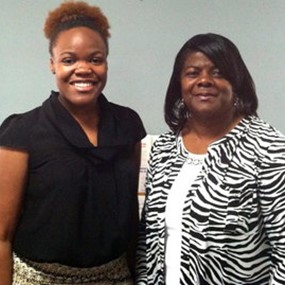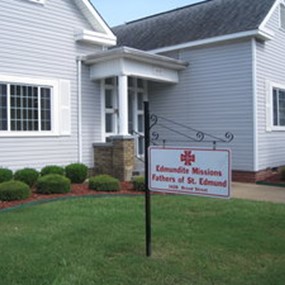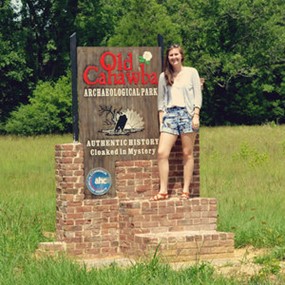Selma's Historic Brown Chapel AME Not Living in the Past
Besides hospitality and good home cooking, the one thing you are virtually guaranteed to find in most any southern town is a church. More times than not, you’ll happen across quite a few. With a whopping 205 churches listed in or near the city limits, Selma is no exception.
For a city like Selma, an area of 14 square miles, dividing the number of churches by the amount of land balances out to almost 14 churches per square mile. Much like the popular saying, there truly is “a church on every corner.”
A select few of the many churches in Selma have been here long enough to see much of the change and growth that has happened in the area. Some of these churches stood prior to the Civil War and remain in their original locations.
St. Paul’s Episcopal Church was organized in 1838, and the current building was completed in 1875. Just down the road, First Presbyterian Church was also organized in 1838 with its current structure completed in 1893. Temple Mishkan Israel, a Jewish Synagogue, was dedicated in February 1900. Historic churches stand all over the city, telling the story of the people and faiths of Selma.
On the other side of town, two historic churches stand on Martin Luther King Jr. Street, appropriately named for his role in the two churches. The younger of the two, First Baptist Church, was organized in 1840 by a freed slave and played a pivotal role in the planning of the initial march to Montgomery, on March 7, 1965, which resulted in “Bloody Sunday.”
The second church, Brown Chapel AME Church, organized in the early 1800s, was the gathering place for the marchers on that fateful day.
Both of these churches still open their doors to the community year round, each having Sunday School and a Worship Service on every Sunday as they have for decades. This week I attended the Sunday worship service at Brown Chapel AME Church and experienced history as it lives on through the generations who have attended the church over the years.
A church is born
Brown Chapel AME Church, now a National Historic Landmark, had its beginnings in the basement of the St. Albert Hotel in the early 1800s when a group of freed slaves became dissatisfied with the treatment they received in the white Episcopal Church in Selma.
Progressing from meetings in the hotel basement to small gatherings in the homes of the members to an actual church building in 1869, the church has grown from a small group of freedmen to a well-recognized name not only in the local community, but all across the South.
Recognized by the African Methodist Episcopal (AME) Connection, the governing network of AME churches, in 1867, Brown Chapel was the first AME church in the state of Alabama.
Fast forward nearly 100 years, and Brown Chapel made history again as a meeting place for the Southern Christian Leadership Conference during a time in which there was an injunction against mass meetings in black churches.
During this time Brown Chapel became the primary location for mass meetings and hosted many notable leaders of the civil rights movement. The Rev. Martin Luther King Jr. spoke there on many occasions, and the front steps of the church served as a meeting place for many of the planned marches that took place in the area.
Brown Chapel today
Being in a place that has made history on so many occasions, you would think that there would be a careful protection of all the things in the church. You shouldn’t step here or sit there, because that is where this person stood. However the church is exactly the opposite. The pulpit where Martin Luther King Jr. stood, where then U.S. Senator Barack Obama stood, is the same one that the Rev. Leotis Strong uses today.
The pews and seating in the upper level remain the same. The organ pipes you see behind Dr. King in the classic photo of his fiery speech on 1965 are still used by the organist today. The church and its members understand the legacy that lives within the walls of the church, but they don’t let it hinder them from continuing to reach out to the community.
During the announcements, the pastor was proud to announce that their session of Vacation Bible School was attended by 84 local children, a huge achievement in an area where drugs and violence are too often a problem for the community.
Today, motivated by the historical maxim, “Lest we forget,” Brown Chapel makes an effort to stay involved in the community, especially with the youth, to ensure not only that children have another place that they can go to, but also that they have another group of people who they have to be accountable to. “If the children’s parents don’t do their job that is one thing. But we as a church have promised to God that we would take care of them,” Rev. Strong stated at the end of his sermon.
Brown Chapel has stood the test of time and provided shelter and support for generations of local people. They welcome visitors with open arms and invite them to become part of the community, embracing the pillars of acceptance that made the church so famous nearly 50 years ago.
In a time where the battle is not as much about racism and discrimination as it is drugs and violence, Brown Chapel has yet again taken a stand and pledged to make a change. I suppose the reason why no parts of the church are roped off or forbidden is because the members of Brown Chapel do not want to separate themselves from the history that has taken place within the walls of the church. And in a time where the fight to stop the violence is going on in full force, it seems this generation of Brown Chapel’s congregation is ready to take on this new battle.
Tags: Selma


